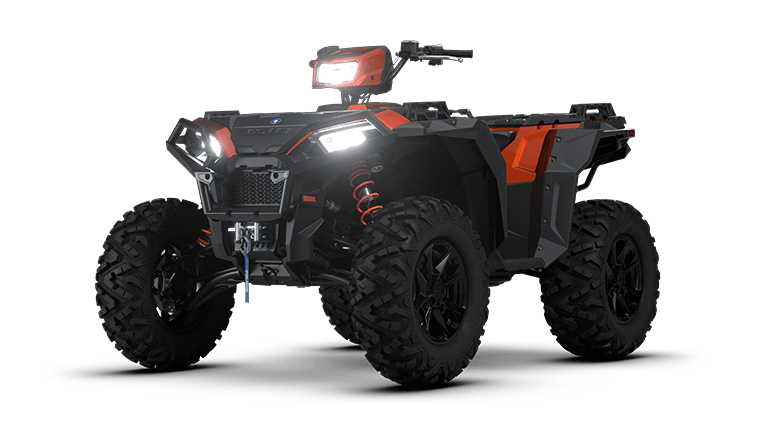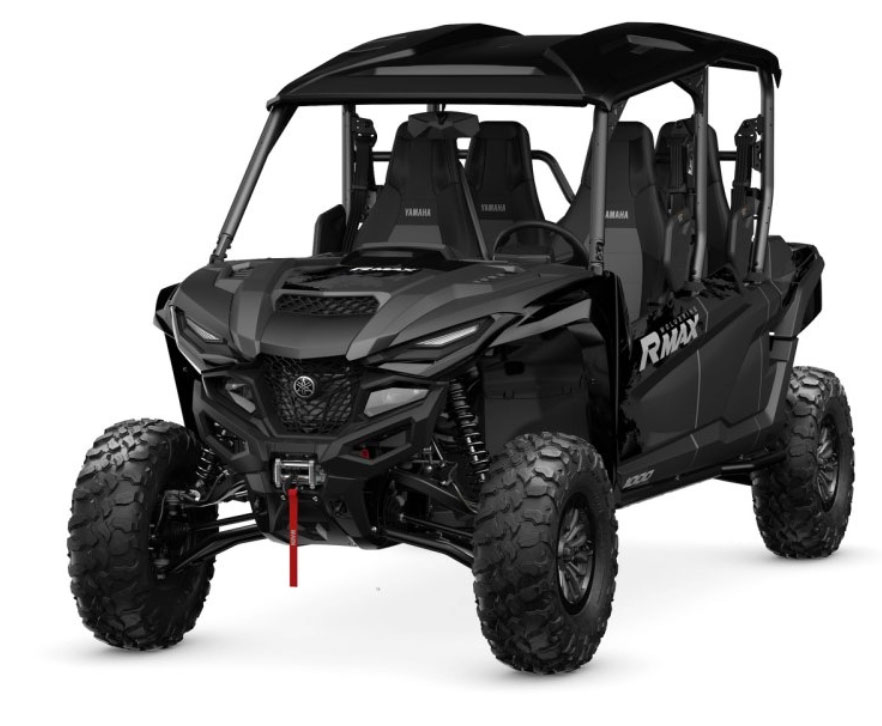Quad bikes and ATV Reviews in South Africa
Latest posts
Quad Bike / ATV Specs
Big Boy ATV Specifications
Can-Am ATV Specifications
CFMOTO ATV Specifications
Dinli ATV Specifications
Honda ATV Specifications
Kawasaki ATV Specifications
KAYO ATV Specifications
Kazuma ATV Specifications
Linhai ATV Specifications
Polaris ATV specs
Suzuki ATV Specifications
Yamaha ATV Specifications
Going off-grid/beating load-shedding?
Many farmers and off-road enthusiasts now run their chargers, winches, and gate motors on solar.
→ Solar Power Guide South Africa (panels, batteries, installers & pricing)ATV Reviews and Comparisons
2025 Polaris Sportsman XP 1000 S vs. Yamaha Wolverine RMAX4 1000
2025 Polaris Sportsman XP 1000 S vs. Yamaha Wolverine RMAX4 1000 – Utility Titans for South African Adventures


As of October 2025, South Africa's rugged landscapes—from the dusty dunes of the Kalahari to the misty trails of the Drakensberg—demand ATVs that blend brute utility with thrilling performance. The 2025 Polaris Sportsman XP 1000 S and Yamaha Wolverine RMAX4 1000 represent the pinnacle of single-rider utility quads, but they cater to slightly different needs. The Polaris, a traditional ATV with roots in 2006, excels as a solo workhorse for farmers and hunters, priced around R280,000–R320,000 in SA (based on importer pricing like Motor King & Marine). The Yamaha, introduced in 2021 as a side-by-side (SxS) with four seats, leans toward family or group adventures, commanding R450,000–R500,000 (converted from US MSRP of ~$26,000–$28,000, factoring import duties). Drawing from specs on quad-atv.specs-sa.com and real-world insights from forums like RZRForums and WolverineForums, this head-to-head pits Polaris's raw power against Yamaha's refined versatility. Which wins for Mzansi riders? Let's break it down.
Overview: ATV vs. SxS – Apples to Oranges?
The Polaris Sportsman XP 1000 S is a classic straddle-style ATV: compact, agile, and built for one rider tackling solo chores or tight trails. It's Polaris's flagship utility quad, emphasizing high-output performance with premium Walker Evans shocks. In contrast, the Yamaha Wolverine RMAX4 1000 is a four-seater SxS (often called a UTV), designed for groups with its enclosed cab-like setup, longer wheelbase, and adventure-focused features. Both share a 1000cc displacement and utility DNA, but the Polaris is nimbler for individual use, while the Yamaha shines for shared outings. For SA buyers, the Polaris suits lone rangers on game farms, whereas the Yamaha appeals to families exploring reserves like Kruger.
| Feature | Polaris Sportsman XP 1000 S | Yamaha Wolverine RMAX4 1000 |
|---|---|---|
| Type | Single-rider ATV | 4-Seat SxS/UTV |
| MSRP (SA Est.) | R280,000–R320,000 | R450,000–R500,000 |
| Introduction Year | 2006 (refreshed 2025) | 2021 (updated 2025) |
| Dry Weight | 431 kg | 610 kg |
| Seating | 1 | 4 |
Engine and Performance: Polaris Edges in Raw Power
Both machines pack near-1000cc punches, but the Polaris delivers explosive solo grunt, while the Yamaha prioritizes smooth, group-friendly torque.
Polaris: A liquid-cooled, DOHC 952cc twin-cylinder four-stroke cranks out 89 hp with 11.0:1 compression and EFI. Bore/stroke (92mm x 72mm) favors high-revving power, hitting 0-50 km/h in under 4 seconds and topping 100 km/h. The PVT automatic (P/R/N/L/H) with On-Demand True AWD, front diff lock, and hi/low range shines for towing 680 kg or crawling rocks. Fuel sipping at 12–15 km/l from a 17L tank yields 200–250 km range—perfect for remote Northern Cape patrols.
Yamaha: Its 999cc DOHC V-twin (8 valves, 11.8:1 compression) produces ~82 hp (slightly less punchy but smoother), with a 92mm x 75mm bore/stroke for low-end torque. Ultramatic V-belt transmission (H/L/N/R/P) includes all-wheel engine braking, On-Command 4WD lock, and hi/low—ideal for controlled descents. Dual hydraulic discs (245mm) front/rear offer superior stopping vs. Polaris's single-lever setup. A massive 35L tank pushes efficiency to 14–16 km/l for 400+ km hauls, suiting long Lowveld treks.
Winner: Polaris for adrenaline-fueled solo rides; Yamaha for refined, fatigue-free group hauls. Forum users on RZRForums note Polaris's "instant torque" edges Yamaha in quick bursts, but Yamaha's braking feels "more planted" for loaded runs.
Handling, Suspension, and Tires: Yamaha's Plush Ride Takes the Lead
Suspension is where these quads diverge most—Polaris for sporty aggression, Yamaha for comfort over distance.
Polaris: Walker Evans needleless shocks deliver 260mm front/rear travel on independent double A-arms (front) and IRS (rear, with preload adjust). 330mm ground clearance conquers ruts, paired with 28x9-14/28x11-14 Maxxis Liberty tires on 14" steel rims for grippy sand/dirt performance. Manual steering is direct but tiring on long days; no EPS hurts here.
Yamaha: Premium FOX iQS shocks (adjustable preload/rebound) boast 305mm front/rear travel with anti-sway bars, absorbing big hits better for bumpy SA trails. Matching 30x10-14 Maxxis tires and 305mm clearance handle mud/sand, but the longer 1,981mm wheelbase (vs. Polaris's 1,283mm) aids stability at speed. EPS steering is a game-changer for effortless control, especially with passengers.
Winner: Yamaha, hands down—its tunable setup and EPS make it the smoother cruiser for family adventures. Polaris feels more "playful" for technical singletrack but fatigues quicker.
Features and Utility: Yamaha's Capacity Wins for Groups
Both are utility beasts, but seating dictates their strengths.
Polaris: Standard front/rear racks (66kg/120kg total), 9.46L storage wells, and digital dash (speedo, trip computer, hour meter) cover basics. Halogen lights and snorkel intake suit night hunts; 12-month warranty (extendable via Polaris SA) fights coastal corrosion.
Yamaha: Similar racks/storage, but four seats (920mm height) and 35L tank enable group hauls. Advanced dash, engine braking, and EPS add polish; same warranty through Yamaha SA. Turf Mode unlocks diffs for yard work, a bonus for urban farms.
Winner: Yamaha for versatility—seating four changes everything for SA family outings. Polaris is lighter-duty but more maneuverable solo.
Pros and Cons
Polaris Sportsman XP 1000 S
Pros:
- Explosive 89 hp for thrilling acceleration.
- Lighter and more agile for tight trails.
- Better value at ~R300k.
- Proven durability in solo utility work.
Cons:
- Single seat limits group use.
- No EPS; manual steering tires arms.
- Smaller tank for shorter range.
Yamaha Wolverine RMAX4 1000
Pros:
- Seats four with plush, adjustable suspension.
- Superior EPS and braking for comfort.
- Massive 35L tank for epic ranges.
- Smoother V-twin for low-speed control.
Cons:
- Heavier and pricier (~R475k).
- Longer wheelbase less nimble in tight spots.
- Less raw power for speed demons.
South African Context
In the Rainbow Nation, the Polaris thrives on solo farms (e.g., Free State plowing) or hunting in the Karoo, complying with AARTO trails and road-legal plates via importers like Motor King. Its lighter weight suits dusty, narrow paths, with strong resale (70–80% after 2 years). The Yamaha, via Yamaha SA dealers, excels for group safaris in Mpumalanga or coastal dunes, its enclosed design shielding from sun/rain. Fuel at ~R25/l favors Yamaha's efficiency, but import waits (4–8 weeks) and duties inflate prices. Forums highlight Polaris's "bang-for-buck" for individuals, while Yamaha wins for "family reliability."
Verdict
The 2025 Polaris Sportsman XP 1000 S earns 4.6/5 for solo warriors craving power and agility—ideal if you're flying solo on a budget. The Yamaha Wolverine RMAX4 1000 scores 4.8/5 as the family hauler supreme, with unmatched comfort and capacity for shared SA escapades. Choose Polaris for nimble utility; Yamaha if seats matter. Test both at local dealers—your trails will thank you. For more specs, visit quad-atv.specs-sa.com.